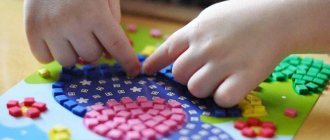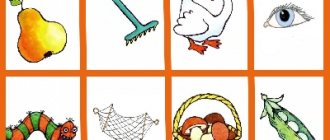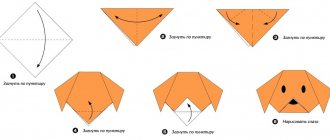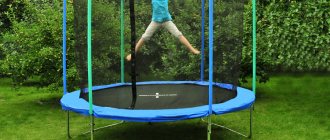Breathing is the energetic basis of spoken speech. The development of speech breathing largely determines the child’s formation of coherent speech, namely correct sound pronunciation, the ability to maintain normal speech volume, its smoothness and intonation expressiveness. By paying attention to establishing the correct speech breathing of the baby in early childhood, you can avoid many speech disorders in the future. In this article we will tell you about the features of speech breathing and ways of its development in preschool children.
Exercises to normalize breathing function
Exercise No. 1 Full breathing. Take a long breath through your nose. During inhalation, the abdomen “inflates”, then the chest expands. When you exhale (through the nose), on the contrary, the volume of the chest first decreases, then the stomach retracts.
Exercise No. 2 Chest breathing. Exhale. Take a long breath through your nose. At this time, the chest expands and the stomach retracts. When you exhale (through the nose), the stomach retracts.
Exercise No. 3 Abdominal breathing. Exhale. Take a long breath through your nose. At this time, the stomach protrudes. When you exhale (through the nose), the stomach retracts.
Exercise No. 4 The skill of full, extended exhalation. Walk at an average pace. Inhale and exhale only through the nose. Inhale for three steps, exhale for four steps. After three to four days, the duration of exhalation should be increased by one count (5,6, etc.)
Exercise No. 5 Inhale and exhale alternately through one nostril (press the second nostril tightly with your finger).
Reviews from doctors about Strelnikova’s breathing exercises
Natalya Shirokhova, pulmonologist:
– Breathing exercises according to Strelnikova is a non-drug method of therapy, which is based on taking short intermittent breaths through the nose and passive exhalations through the nose or mouth. Breathing exercises help increase gas exchange in the lungs. Her techniques help saturate the body with oxygen, prevent the formation of fibrosis in the lung tissue, and strengthen the respiratory muscles.
Although the method is positioned as universal for healing many organs and systems, it is most often used by pulmonologists. The first on the list of indications for this gymnastics are lung diseases: bronchitis, bronchial asthma and pneumonia.
Most of the studies and observations, including in my practice, on the effectiveness of breathing exercises were carried out in patients with obstructive pulmonary diseases, which include chronic bronchitis and bronchial asthma. In these patients, as a result of systematic therapy, external respiratory function significantly improved, the frequency of asthmatic attacks decreased, and cough relief was noted.
Alexey Zhito, general practitioner, cardiologist:
– Strelnikova’s breathing exercises are, of course, an important component in the complex treatment of pneumonia and recovery from it. This set of exercises has also demonstrated high effectiveness in treating patients with new coronavirus infection.
These exercises improve the drainage function of the lungs, blood circulation in damaged areas of the lungs, prevent the formation of “non-functioning” areas of the lungs - atelectasis, and strengthen general and local nonspecific immunity. The complex rehabilitation potential of exercise helps to normalize the cardiovascular system, improve blood pressure, glycemia (blood glucose) levels and reduce body weight.
Strelnikova’s breathing exercises have a pronounced positive effect on the course of pneumonia and rehabilitation after it. This is especially true in the context of the new coronavirus infection.
But it has relative contraindications:
- marked increase in blood pressure (150/90 mmHg);
- low blood pressure (below 90/60 mm Hg);
- high (above 13 mmol/l) and low (below 3.9 mmol/l) blood sugar levels;
- bleeding of various locations in the recent past;
- chest and upper belt injuries;
- uncompensated thyrotoxicosis;
- temperature above 37.5 °C.
However, most of them are temporary, and as soon as the problems are eliminated, gymnastics can be carried out.
There are some features of this gymnastics for certain groups of patients:
- people at high risk of falls need to reduce this risk as much as possible;
- for radiculopathy of the cervical and thoracic spine, the sharpness and amplitude of movements must be limited.
Similar restrictions are possible for patients with increased intraocular and intracranial pressure.
To exclude contraindications, consult with your doctor before starting Strelnikova gymnastics.
Exercises to train the muscles of the tongue and normalize the type of swallowing
Exercise No. 1 “Clock”. The mouth is open, the tongue makes slow circular movements along the upper lip, then along the lower lip.
Exercise No. 2 “Punish the naughty tongue.” Place your tongue on your lower lip and slap it with your upper lip “na-na.”
Exercise No. 3 “We will paint the ceiling.” It's time to paint the rooms, they invited a molar, he comes to the old house with a new brush and bucket. Your tongues are a brush, your hard palate is the ceiling...
Exercise No. 4 Depict the operation of a jackhammer. DDDD...
Exercise No. 5 “Riders”. Sit astride a chair and, opening your mouth wide, click your tongue.
Exercises to normalize breathing function
Exercise No. 1 Full breathing. Take a long breath through your nose. During inhalation, the abdomen “inflates”, then the chest expands. When you exhale (through the nose), on the contrary, the volume of the chest first decreases, then the stomach retracts.
Exercise No. 2 Chest breathing. Exhale. Take a long breath through your nose. At this time, the chest expands and the stomach retracts. When you exhale (through the nose), the stomach retracts.
Exercise No. 3 Abdominal breathing. Exhale. Take a long breath through your nose. At this time, the stomach protrudes. When you exhale (through the nose), the stomach retracts.
Exercise No. 4 The skill of full, extended exhalation. Walk at an average pace. Inhale and exhale only through the nose. Inhale for three steps, exhale for four steps. After three to four days, the duration of exhalation should be increased by one count (5,6, etc.)
Exercise No. 5 Inhale and exhale alternately through one nostril (press the second nostril tightly with your finger).
Exercise No. 6 Exhale. Pinch your nose with your fingers. Slowly count out loud to 5, then take a deep breath and exhale through your nose.
Exercises to strengthen the pharyngeal muscles
Exercise No. 1 Alternately tilt your head back as much as possible, leaning forward.
Exercise No. 2 Throw your head back. In this position, alternately tilt your head towards the right and left shoulder.
Exercise No. 3 Throw your head back, in this position alternately turn your head, without releasing your chin, to the right, then to the left.
Strelnikova’s gymnastics for home, during the rehabilitation period
When your health allows, you need to do a full course of gymnastics at home.
When exercising, breathe actively, sharply, through your nose, exhale passively through your mouth. The duration of classes is up to half an hour; in exercises from the second to the 12th, 8 breaths are taken in a row. Exercise 1: Palms. Stand up straight, bend your elbows, and hold them in front of your chest with your palms facing up. Take 4 deep breaths while clenching your palms into fists. Lower your arms, rest for 4 - 5 seconds, exhaling freely through your mouth. Repeat 24 times.
Exercise 2: Shoulder straps. Stand up straight, clench your palms into fists and press them to your stomach. As you inhale, press your fists down, tensing your shoulder muscles; as you exhale, return your hands to the starting position, relaxing the muscles. Take 8 such breaths in a row, then relax for 4 - 5 minutes.
Exercise 3: Pump. Stand straight with your feet shoulder-width apart and extend your arms along your torso. Bend forward, stretching your arms towards the floor, but do not touch it. At the same time as you bend, inhale, exhaling as you straighten your back. Do not straighten your back completely. Such tilts need to be done 50 - 100 times within a minute.
Exercise 4: Cat. Stand straight with your feet slightly apart. Squat slightly, turn to the right, taking a sharp breath. Return to the starting position. Then repeat the movement in the other direction. When turning with your hands, make grabbing movements. Keep your back straight, moving only at the waist.
Exercise 5: Shoulder Hugging. Stand up straight, bend your elbows, raise them to crying level. Take a sharp breath, wrapping your arms around your shoulders, placing your arms parallel to each other. Do 4 sets with rest.
Exercise 6: Large pendulum. Stand straight with your feet wider than shoulder-width apart. Lean forward, stretch your arms towards the floor, taking a deep breath, then return to a similar position, hugging your shoulders with your arms and inhaling again.
Exercise 7: Head turns. Stand up straight with your feet slightly apart. Turn your head to the right as you inhale, return to the starting position as you exhale, then to the left as you inhale. Exhale smoothly and inhale more sharply.
Exercise 8: Ears. Stand up straight, legs slightly apart. Tilt your head to the right, towards your shoulder, touching it with your ear as you inhale, and as you lift your head, exhale. Repeat with the other shoulder.
Exercise 9: Pendulum with your head. Stand straight, legs slightly apart, tilt your head forward and look at the floor as you inhale, return to the starting position as you exhale. Then repeat, throwing your head back as you inhale.
Exercise 10: Rolls. Stand up straight, with your left leg slightly forward and your right leg slightly back. Transfer your body weight to your left leg, bend your right leg and place it on your toe. Squat down on your left leg while inhaling deeply. Straighten your leg and transfer your body weight to your right, squat on it with a sharp inhalation.
Exercises to normalize the function of lip closure
Exercise No. 1 Pull your lips forward, close them, draw a tube, and stretch them wide.
Exercise No. 2 Pull your lips forward, close them, depict a mouthpiece, a proboscis.
Exercise No. 3 Close your lips, puff out your cheeks, slowly squeeze the air through your clenched lips with your fists.
Exercise No. 4 Close your lips, then move them alternately to the right and left.
Exercise No. 5 Close your lips, blow air under your upper lip, then under your lower lip.
Exercise No. 6 Place bent little fingers in the corners of the mouth, do not close your lips, spread your fingers slightly to the sides, close your lips.
Exercise No. 7 Blow out a stream of air with force (“a breeze is blowing,” let’s put out the candle,” “let’s make a storm,” etc.).
Exercises to train the muscles of the tongue and normalize the type of swallowing
Exercise No. 1 “Clock”. The mouth is open, the tongue makes slow circular movements along the upper lip, then along the lower lip.
Exercise No. 2 “Punish the naughty tongue.” Place your tongue on your lower lip and slap it with your upper lip “na-na.”
Exercise No. 3 “We will paint the ceiling.” It's time to paint the rooms, they invited a molar, he comes to the old house with a new brush and bucket. Your tongues are a brush, your hard palate is the ceiling...
Exercise No. 4 Depict the operation of a jackhammer. DDDD...
Exercise No. 5 “Riders”. Sit astride the toilet seat and, opening your mouth wide, click your tongue.
Exercise No. 6 Lift the tongue up, press it to the front part of the hard palate in the area of the palatine folds. Clench your teeth, swallow saliva, fixing the position of your tongue.
Exercise No. 7 Raise the tip of the tongue up and place it at the anterior part of the hard palate. Move the tongue along the arch of the hard palate as far back as possible to the soft palate.
Exercise No. 8 Raise the tip of the tongue up and place it at the anterior part of the hard palate. Move your tongue along the palatal surface of the teeth on the right and left, touching each tooth.
Articulation gymnastics
During the preliminary speech therapy examination, disturbances in the structure of the organs of the articulatory apparatus are often discovered. In such cases, in parallel with the work on developing phonemic perception, articulatory gymnastics (preparatory exercises) are carried out.
The goal of articulatory gymnastics is to develop correct, full-fledged movements of the articulatory organs necessary for the correct pronunciation of sounds, and to combine simple movements into complex articulatory structures of various phonemes.
As a rule, it is necessary to exercise the child only in those movements that are impaired, as well as in those that are required to produce each specific sound.
The entire system of articulatory gymnastics can be divided into two types of exercises: static and dynamic. Each exercise has its own name. These names are conventional, but it is very important that children remember them. Firstly, the name arouses the child’s interest in the exercise, and secondly, it saves time, since the speech therapist does not need to explain how to do it every time, but it is enough to just say “Let’s play the drum” or “Let’s play horses.”
Static preparatory exercises
1. "Spatula". Stick out your wide tongue, relax it, and place it on your lower lip. Make sure your tongue doesn't tremble. Hold for 10 - 15 s (Fig. 9).
2. "Calyx". Open your mouth wide. Raise the wide tongue upward. Reach towards your upper teeth, but do not touch them. Hold your tongue in this position for 10 - 15 seconds (Fig. 10).
3. "Needle". Open your mouth. Stick your tongue far forward, tense it, make it narrow. Hold in this position for 15 s (Fig. 11).
4. "Slide". Open your mouth slightly. Press the lateral edges of the tongue against the upper molars. Place the tip of your tongue against your lower front teeth. Hold in this position for 15 s (Fig. 12).
5. “Tube”. Stick out your wide tongue. Fold the lateral edges of the tongue upward. Blow into the resulting tube. Perform at a slow pace 10 - 15 times (Fig. 13).
Each of the listed exercises is performed clearly, slowly 8-10 times.
Dynamic preparatory exercises
1. "Watch". Stick out your narrow tongue. Reach your tongue alternately to the right ear, then to the left. Move your tongue from the corner of your mouth at a slow pace under the guidance of the speech therapist. Do this 15 - 20 times (Fig. 14).
2. "Horse". Suck your tongue to the roof of your mouth and click your tongue.
Rice. 9. Articulation exercise “Spatula”. Rig 10. Articulation exercise “Cup”
Exercises to normalize breathing function
Exercise No. 1 Full breathing. Take a long breath through your nose. During inhalation, the abdomen “inflates”, then the chest expands. When you exhale (through the nose), on the contrary, the volume of the chest first decreases, then the stomach retracts.
Exercise No. 2 Chest breathing. Exhale. Take a long breath through your nose. At this time, the chest expands and the stomach retracts. When you exhale (through the nose), the stomach retracts.
Exercise No. 3 Abdominal breathing. Exhale. Take a long breath through your nose. At this time, the stomach protrudes. When you exhale (through the nose), the stomach retracts.
Exercise No. 4 The skill of full, extended exhalation. Walk at an average pace. Inhale and exhale only through the nose. Inhale for three steps, exhale for four steps. After three to four days, the duration of exhalation should be increased by one count (5,6, etc.)
Exercise No. 5 Inhale and exhale alternately through one nostril (press the second nostril tightly with your finger).
Recommendations for performing breathing exercises
- Classes must be carried out in a well-ventilated area;
- All exercises should be performed before meals;
- Clothing should not hinder the baby's movements;
- The muscles of the child’s neck, shoulders, arms, chest and abdomen should be relaxed;
- Inhalation should occur through the nose;
- The exhalation should be long and smooth;
- Make sure that when performing breathing exercises, the child does not puff out his cheeks. At first, you can hold them with your palms;
- 3-5 repetitions of each exercise are enough, between which you should take a 2-3 second pause. The total duration of breathing exercises should not exceed 5 minutes.
It is very important to measure the amount of breathing exercises and perform them at a moderate pace to avoid hyperventilation.
Additional special exercises
Exercise No. 1. Slowly push the lower jaw forward until the cutting edges of the lower incisors are positioned in front of the upper ones. Hold the lower jaw in this position for 10 seconds, then slowly return to its original position.
Exercise No. 2. Perform the same exercise with a spank of the head, first to the right, then to the left. The load increases when performing the exercise while standing. The head is slightly tilted back, the lower jaw is slowly pushed forward until the lower incisors are positioned in front of the upper ones.
Exercise No. 3 (with the vestibular plate). The vestibular plate is placed in the vestibule of the oral cavity, with 1 finger of the right hand it is pulled forward by the ring and held with pursed lips.
Exercise No. 4. Place a folded strip of paper between your lips and purse your lips. The paper is held for up to 30-50 minutes during quiet games, drawing, reading, or when the child is watching TV.
Exercise No. 5. Perform the previous exercise, replace the strip of paper with a metal disk with a diameter of 2.5-3 cm, a thickness of 1.5 mm and a mass of about 6.5 g. The disk clamped between the lips should be positioned horizontally, it is necessary to ensure that the disk is only clamped lips, not teeth. The exercise is performed until fatigue (from 30 seconds to several minutes).
Exercise No. 6 (with a plastic plate). The child presses the edge of the plate, 1-2 mm thick and 30-35 mm wide, with his lips. 60-120 mm long. and holds it in a horizontal position. Some kind of weight is placed on the plate. Increasing the load causes increased clenching of the lips.
Exercise No. 7. Small cotton rolls are placed in the area of the transitional fold of the vestibule of the oral cavity on both sides of the frenulum of the upper lip. Close your lips and pronounce a series of phrases containing labial sounds (“b”, “m”, “p”).
Exercises to develop the strength and duration of exhalation
- Breeze. Tie several ribbons of serpentine or Christmas tree rain to a thread or lace. Invite your baby to blow on them and create a breeze. You can make the task more difficult by asking them to blow on ribbons of a certain color. The distance between the face and the ribbons should be approximately 10-15 cm.
- Leaf fall. Cut out real autumn leaves from paper or collect them from the street. Together with your child, you can arrange a real leaf fall by blowing them off the table. In the winter season, you can also play with paper snowflakes.
- Fly, feather! Let the baby throw the feather up and blow on it from bottom to top, not letting it fall.
- Pencil athletes. Draw start and finish lines on the table. At the start, put two pencils of different colors. Take turns blowing with your child on his own pencil and arrange a competition to see which of them will “run” to the finish line first.
- Sailors. Make boats out of paper or cork and lower them into a basin of water. There is a strong wind at sea - we blow on the ships, forcing them to move.
- Blow out the candles. You can role-play a birthday situation with your child. Prepare a toy set, cake and real candles. By blowing out the candles, you can make a wish.
- Pinwheel. A fidget toy is great for creating proper exhalation. Children love to watch the rotating blades and are proud of the result of their efforts.
- Whistles with the sounds of various animals and birds will also delight the baby and will be very useful for the development of his speech breathing.
- Another simple way to practice breathing is using soap bubbles.
Make sure that the child makes smooth and long exhalations. Gradually make the exercises more difficult by increasing the distance between your face and the object being deflated.
Exercises to normalize breathing function
Exercise No. 1 Full breathing. Take a long breath through your nose. During inhalation, the abdomen “inflates”, then the chest expands. When you exhale (through the nose), on the contrary, the volume of the chest first decreases, then the stomach retracts.
Exercise No. 2 Chest breathing. Exhale. Take a long breath through your nose. At this time, the chest expands and the stomach retracts. When you exhale (through the nose), the stomach retracts.
Exercise No. 3 Abdominal breathing. Exhale. Take a long breath through your nose. At this time, the stomach protrudes. When you exhale (through the nose), the stomach retracts.
Exercise No. 4 The skill of full, extended exhalation. Walk at an average pace. Inhale and exhale only through the nose. Inhale for three steps, exhale for four steps. After three to four days, the duration of exhalation should be increased by one count (5,6, etc.)
Exercise No. 5 inhale and exhale alternately through one nostril (press the second nostril tightly with your finger).
Exercises to train the muscles of the tongue and normalize the type of swallowing
Exercise No. 1 “Clock”. The mouth is open, the tongue makes slow circular movements along the upper lip, then along the lower lip.
Exercise No. 2 “Punish the naughty tongue.” Place your tongue on your lower lip and slap it with your upper lip “na-na.”
Exercise No. 3 “We will paint the ceiling.” It's time to paint the rooms, they invited a molar, he comes to the old house with a new brush and bucket. Your tongues are a brush, your hard palate is the ceiling...
Exercise No. 4 Depict the operation of a jackhammer. DDDD...
Exercise No. 5 “Riders”. Sit astride a chair and, opening your mouth wide, click your tongue.
Additional special exercises
Exercise No. 1. Use the tip of your tongue to press on the palatal surfaces of the upper front teeth until the muscles are tired (3-5 minutes).
Exercise No. 2. With the head thrown back, alternately open and close the mouth; when closing the mouth, try to reach the back edge of the hard palate with the tip of the tongue.
Exercise No. 3. Pinch your lower lip with your upper front teeth, hold it, then release it.
Exercise No. 4. Open your mouth, slowly close it, sweeping the lower jaw back and placing the front teeth in marginal closure. Hold the lower jaw in this position for 4-8 seconds.
Exercise No. 5 (with a wooden spatula). A spatula is placed between the teeth (its width is equal to the width of the upper incisors).
Bite the spatula so as to apply pressure on the palatal surfaces of the upper teeth and promote their deflection in the vestibular direction, and the lower incisors in the lingual direction.








